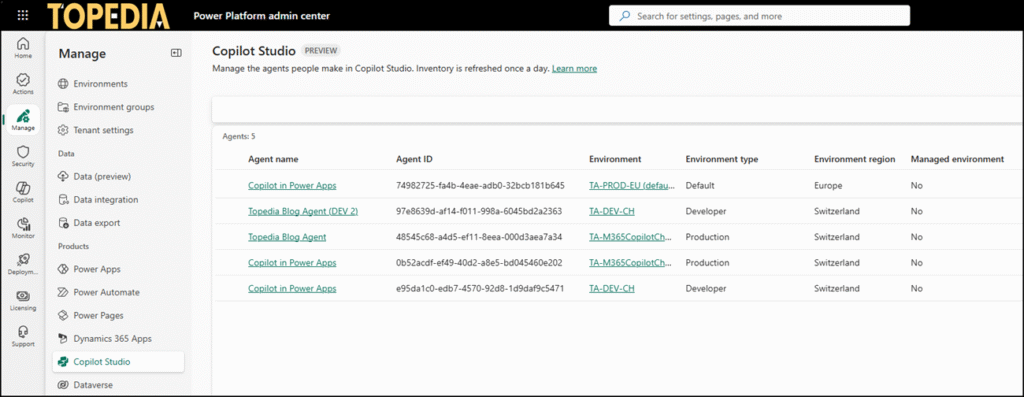Microsoft has introduced a new Agent Inventory page in the Power Platform admin center, now available in Public Preview.
This new inventory page gives Power Platform tenant admins enhanced visibility into Copilot Studio agents across the entire organization. Admins can now discover, search, filter, and sort the full inventory of agents across all environments, using key attributes like owner, creation date, region, and more. This makes it easier to manage and govern agent usage from a single place.
Timeline
Rollout to public preview started in July 2025.
Key benefits and requirements
The Agent Inventory page requires tenant-level analytics to be enabled and is accessible only to Power Platform tenant administrators. You need this admin role as you can open and edit all agents.
This new inventory page enables tenant admins to:
- Discover all Copilot Studio agents across environments
- Search, filter, and sort agents using attributes like owner, creation date, region, and more
- Gain visibility into agent distribution, helping with governance and lifecycle management
- Identify orphaned or inactive agents that may need review or cleanup
This central view helps admins stay on top of agent sprawl and maintain better oversight of AI deployments across the tenant.
To access the new Agent Inventory page, go to the Power Platform admin center, then navigate to Manage > Copilot Studio.
The inventory is refreshed daily and shows up to 500 agents. Deleted agents might remain visible for up to 48 hours after removal.
If your organization has more than 500 agents, Microsoft recommends using filters to narrow the results. Please note that the inventory search bar only searches within the 500 agents displayed, not the entire inventory.
Additionally, review the known limitations in Microsoft’s documentation to understand current gaps.
You can view the following information:
- The number of Copilot Studio agents in your organization
- Agent name
- Agent ID
- The owner of the agent
- Modified date
- Creation date
- Who created the agent
- When the agent was published
- The environment where the agent is located
- Environment type
- Environment ID
- Environment region
- Whether the environment is unmanaged or managed

